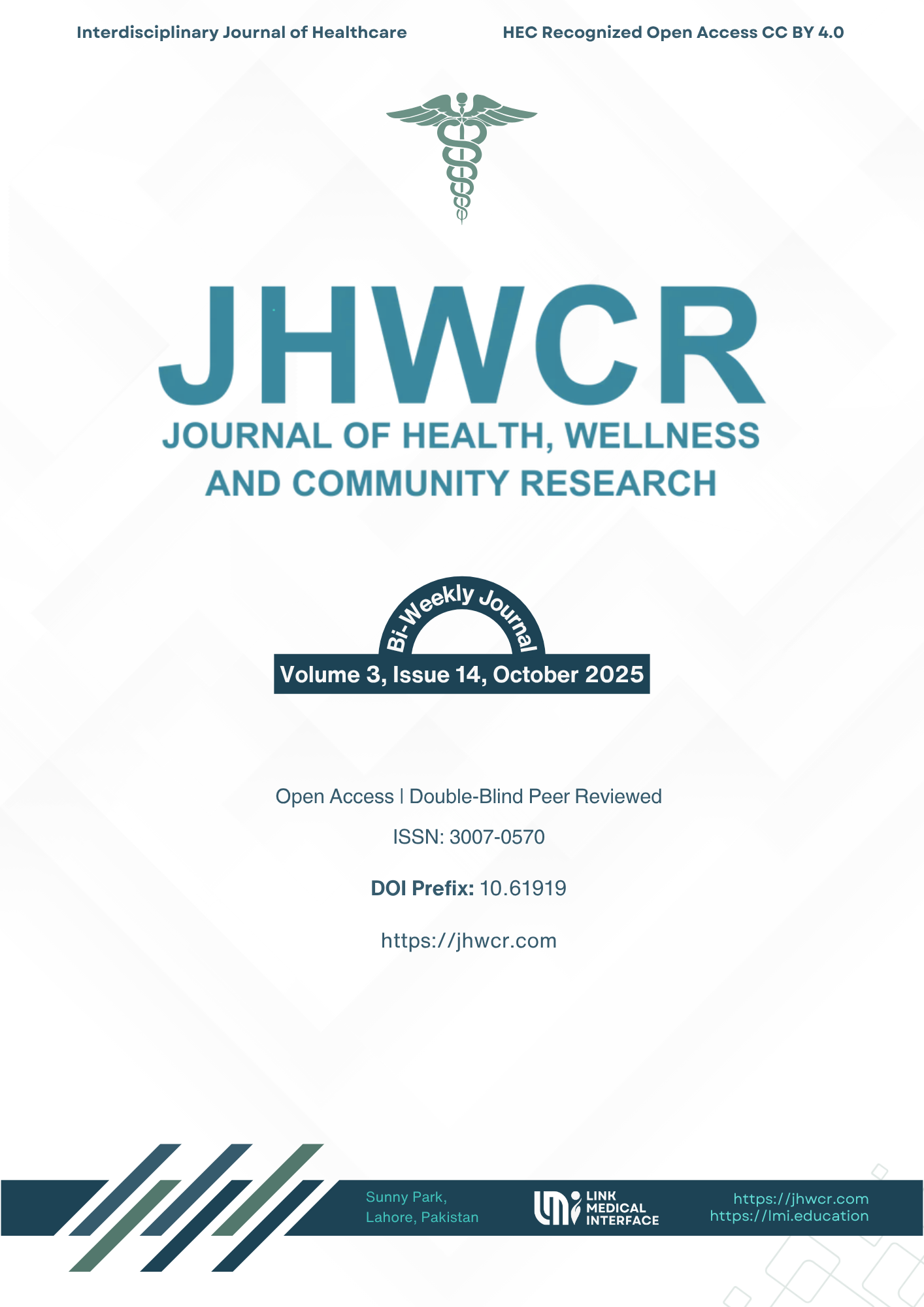Prevalence of Guyon Canal Syndrome in Cyclist Students
DOI:
https://doi.org/10.61919/cwpng960Keywords:
Guyon Canal Syndrome, Cyclist Students, Ulnar Nerve Compression, Prevalence, Neuropathy, ErgonomicsAbstract
Background: Guyon Canal Syndrome (GCS) is an entrapment neuropathy caused by ulnar nerve compression at the wrist within the confined anatomical structure known as Guyon’s canal. While well-documented among professional cyclists and adults, its occurrence in school-aged cyclists remains underexplored. Prolonged handlebar pressure, poor ergonomics, and repetitive wrist strain during cycling may predispose young riders to early neural dysfunction, pain, and functional impairment (1–5). Objective: To determine the prevalence and severity of Guyon Canal Syndrome among cyclist students and to assess the association between cycling exposure, symptom intensity, and functional limitations. Methods: This cross-sectional observational study recruited 110 cyclist students aged 8–15 years from schools in the Sargodha Division. Participants meeting the inclusion criteria underwent the Upper Limb Tension Test (ULTT) for ulnar nerve bias, Numeric Pain Rating Scale (NPRS) for pain intensity, and Patient-Rated Ulnar Nerve Evaluation (PRUNE) for functional assessment. Data were analyzed using SPSS version 27 with descriptive statistics, frequencies, and proportions; inferential analyses examined associations between age, gender, cycling duration, and symptom severity. Results: The mean age of participants was 11.49 ± 2.31 years, with 76.4% males. Mild to severe pain was reported by 87.3% of students, and 62.7% showed sensory symptoms such as tingling or numbness in the little finger. Functional limitations were observed in 54.5% of cases, particularly in grip and repetitive finger tasks. Older age and increased weekly cycling duration were significantly correlated with symptom severity (p < 0.05). Conclusion: The study revealed a high prevalence of Guyon Canal Syndrome among cyclist students, demonstrating that repetitive mechanical wrist loading during cycling significantly contributes to early ulnar nerve compression and functional impairment. Preventive ergonomic interventions and early screening are recommended to mitigate long-term neuromuscular consequences.
Downloads
Published
Issue
Section
License
Copyright (c) 2025 Asma Zainab, Kashaf Noor, Rania Khurram, Muhammad Bakhsh Makhdoom, Kashaf Faraz, Sania Naz, Ghazal Fatima (Author)

This work is licensed under a Creative Commons Attribution 4.0 International License.


